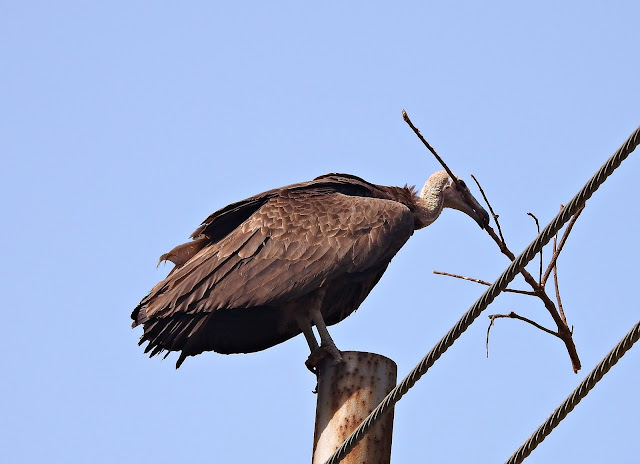The Hooded Vulture is a lovely, relatively petite vulture. Overall it is a dark chocolatey brown color, with a white "collar" sometimes visible around its neck. True to its name, the hooded vulture has a small patch of downy feathers that runs along the back of its neck to the crown of its head, making it look like it is wearing a fluffy, cream-colored hood! It is has dark eyes and a long, narrow bill. Its face is devoid of feathers and its bare skin is normally white. However, when the vulture gets agitated or anxious, the white face flushes to a light pink or red - making it look as if it were blushing.
Like so many vulture species, the Hooded Vulture is often seen soaring high in the sky or gathered singly or in small groups at an animal carcass, garbage dump or slaughterhouse.
Many people mistakenly believe that vultures are dirty animals because of their steady diet of dead animals. However, the exact opposite is true. Vultures enjoy bathing and can spend quite a bit of time around watering holes. And speaking of bathing, vultures also spend time sunbathing, or sunning, as well. But, it isn't because they want to get a tan! Among other reasons, it is to help keep their feathers healthy and clean.
Scientists believe that when birds sun, this actually helps rid their feathers of unwanted and dangerous parasites. These parasites like to hide deep in a bird's feathers. Exposing them to sunlight, and the related heat, causes the parasites to move around, making it easier for the birds to pick off the parasites when they clean, or preen, their feathers.

















































